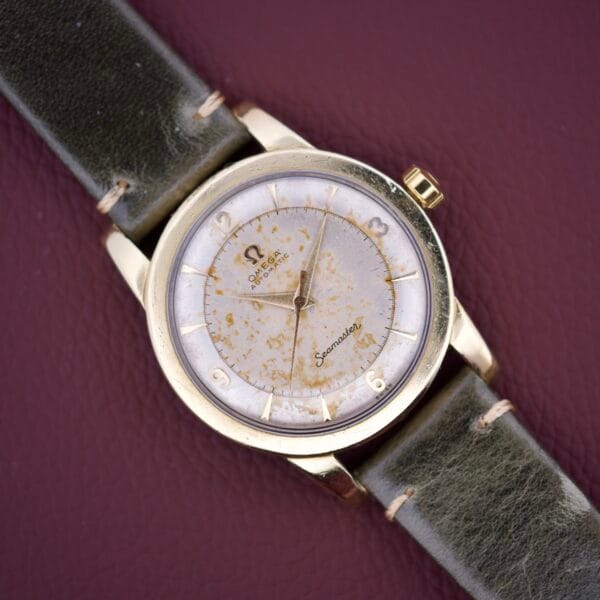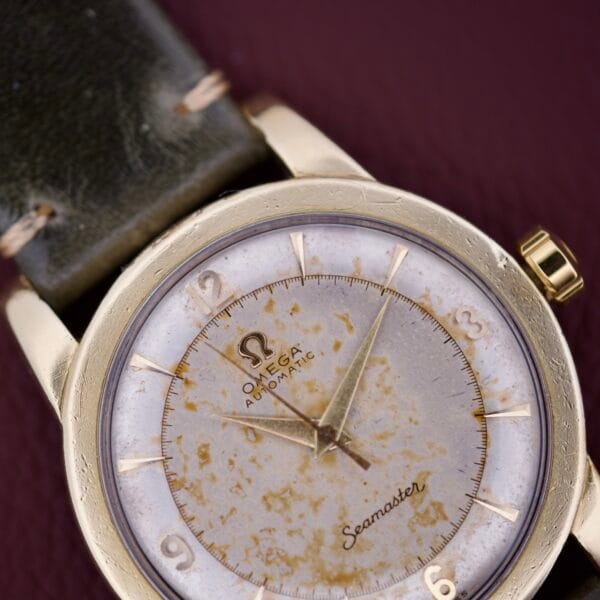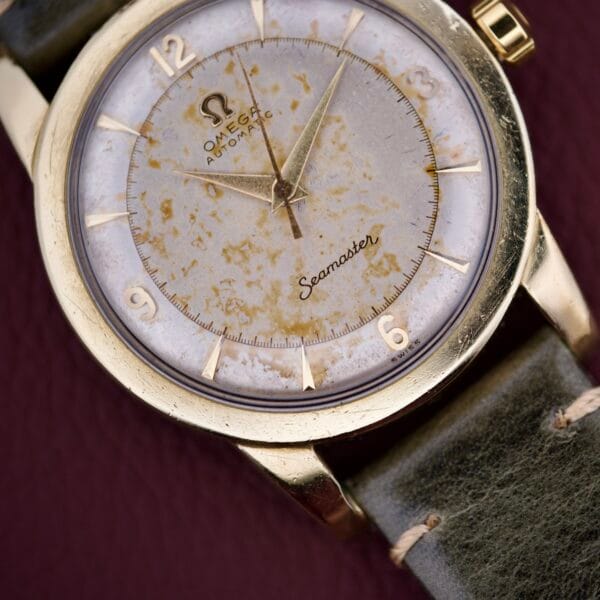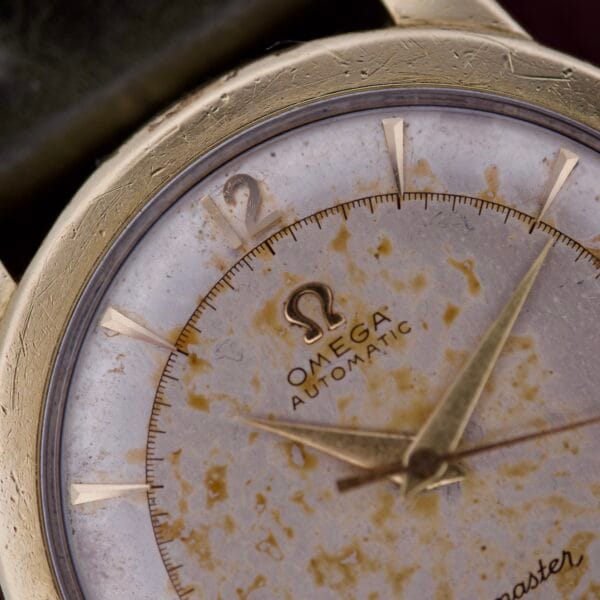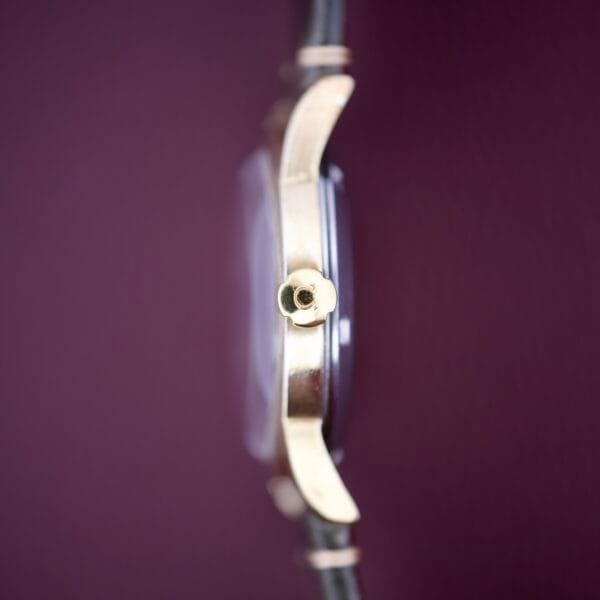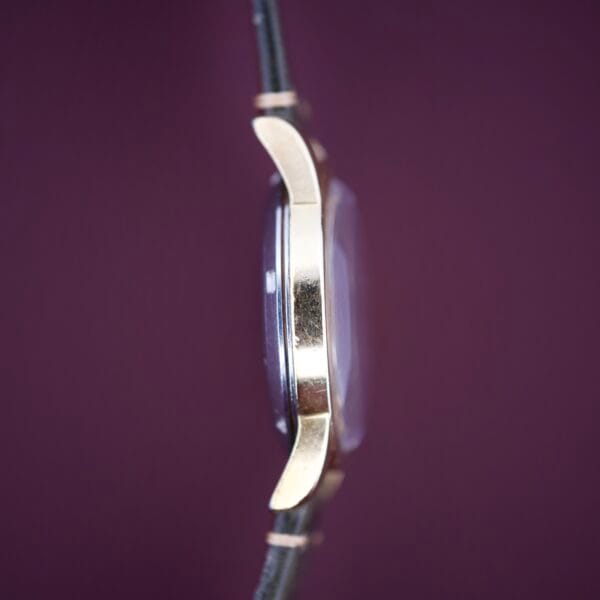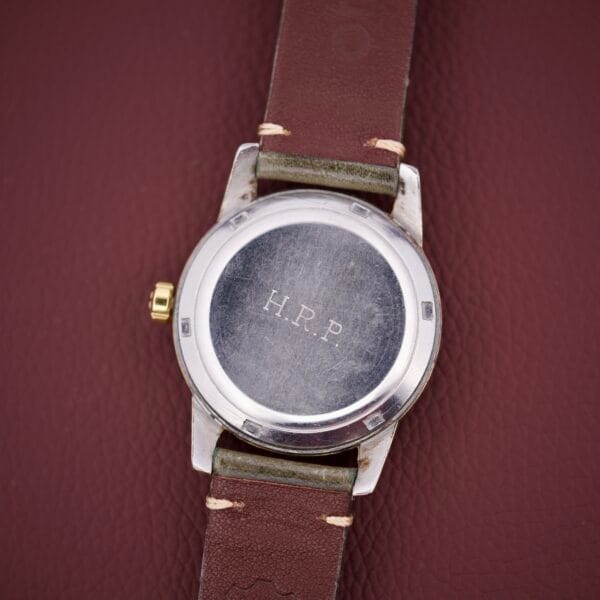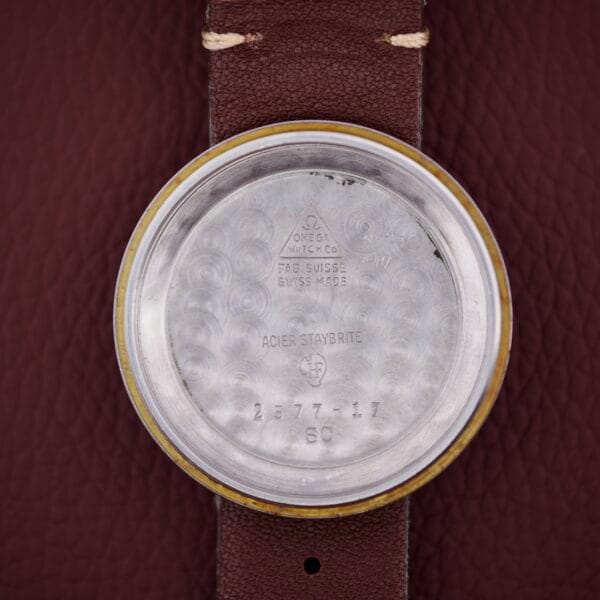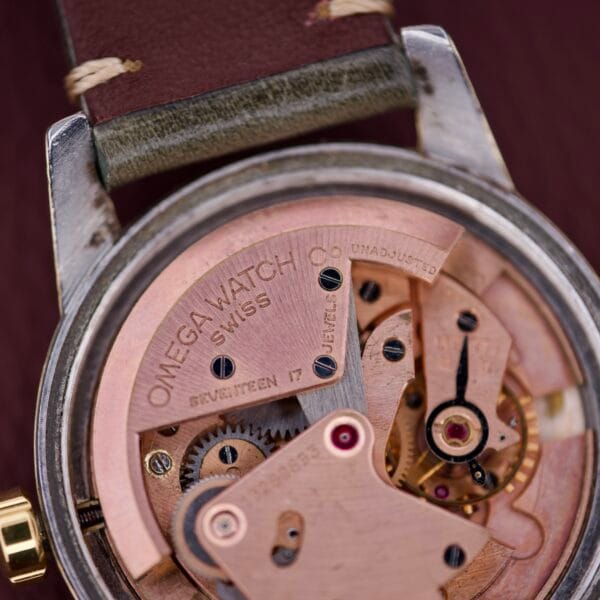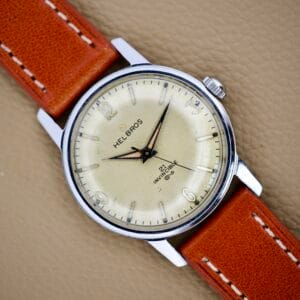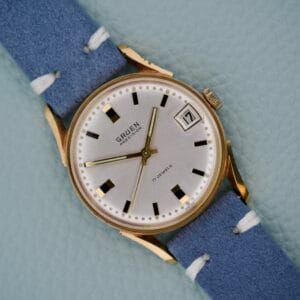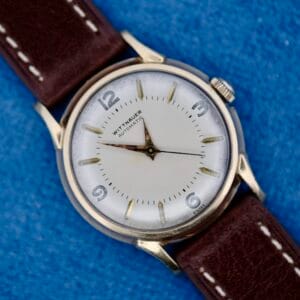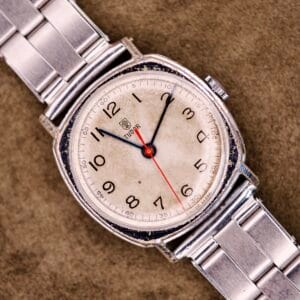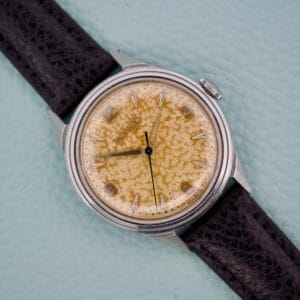To speak of the Omega Seamaster is to speak of a legend. Introduced in 1948 to celebrate the maison’s 100th anniversary, it is the brand’s longest-running line, a testament to its foundational brilliance. The Seamaster was conceived as the ultimate go-anywhere, do-anything gentleman’s watch, built upon the robust, water-resistant technologies Omega had perfected for the British military during World War II. It was pitched for a life of action, equally at home in “town, sea, and country.” The early references, like the 2577, represent the purest distillation of this ethos, blending rugged capability with a svelte, sophisticated design that was perfectly in tune with the style of the 1950s.
Powering this Seamaster is the Caliber 354, a member of Omega’s first generation of automatic movements. But this isn’t just any automatic. It’s a “bumper” automatic. Unlike a modern rotor that spins a full 360 degrees, the bumper’s weighted semi-rotor would pivot back and forth, gently “bumping” off a pair of shock-absorbing springs. You can feel it on the wrist, a subtle, kinetic reminder of the beautiful machine at work. To us, these early bumper movements have an immense charm and historical importance, representing a pivotal moment in the journey toward the fully rotational rotors that are now industry standard.
Now, let’s talk about the dial. In the world of vintage collecting, there are perfect dials, and then there are dials that are perfectly imperfect. This is emphatically the latter, and in our opinion, it is breathtaking. What you are seeing is a “tropical” dial, a one-of-a-kind piece of art created by decades of exposure to UV light and the elements. An initial flaw in the protective lacquer has allowed the original finish to blossom into this stunning, speckled patina that evokes a starry nebula or a piece of abstract art. This is not damage; it is character. No two tropical dials age the same way, making this watch utterly unique. It’s a process that cannot be faked or replicated, a divine accident that turns a production timepiece into a singular masterpiece.
This specific example, a Reference 2577-17, presents this extraordinary dial in a 34mm stainless steel case with a 14k gold-filled bezel, a classic “deux-tons” combination that adds a touch of warmth and elegance. The applied gold hour markers and dauphine hands remain sharp, providing a beautiful contrast against the wild backdrop of the tropical dial.

